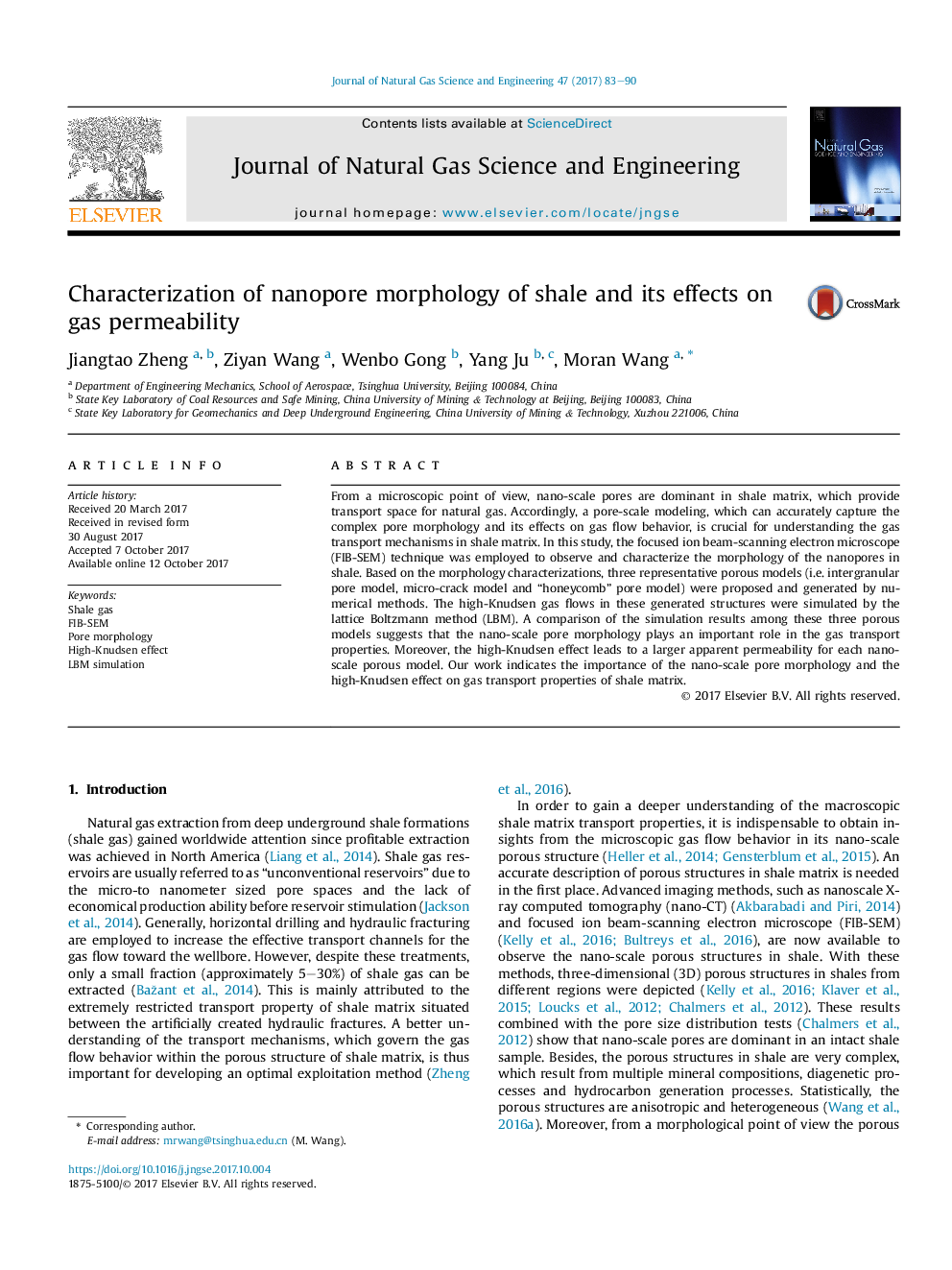| Article ID | Journal | Published Year | Pages | File Type |
|---|---|---|---|---|
| 5484694 | Journal of Natural Gas Science and Engineering | 2017 | 8 Pages |
Abstract
From a microscopic point of view, nano-scale pores are dominant in shale matrix, which provide transport space for natural gas. Accordingly, a pore-scale modeling, which can accurately capture the complex pore morphology and its effects on gas flow behavior, is crucial for understanding the gas transport mechanisms in shale matrix. In this study, the focused ion beam-scanning electron microscope (FIB-SEM) technique was employed to observe and characterize the morphology of the nanopores in shale. Based on the morphology characterizations, three representative porous models (i.e. intergranular pore model, micro-crack model and “honeycomb” pore model) were proposed and generated by numerical methods. The high-Knudsen gas flows in these generated structures were simulated by the lattice Boltzmann method (LBM). A comparison of the simulation results among these three porous models suggests that the nano-scale pore morphology plays an important role in the gas transport properties. Moreover, the high-Knudsen effect leads to a larger apparent permeability for each nano-scale porous model. Our work indicates the importance of the nano-scale pore morphology and the high-Knudsen effect on gas transport properties of shale matrix.
Keywords
Related Topics
Physical Sciences and Engineering
Earth and Planetary Sciences
Earth and Planetary Sciences (General)
Authors
Jiangtao Zheng, Ziyan Wang, Wenbo Gong, Yang Ju, Moran Wang,
